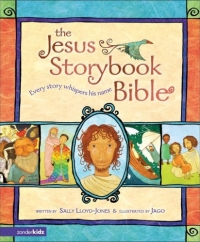 This is a review I’ve been meaning to write for some time. My brother gave me this book, back when I was a fairly new convert to covenant theology (or better a new ex-dispensationalist), a couple years ago. With my poor reading habits, I started (and sometimes finished), a good many other books before I actually finished reading this one. Don’t get me wrong, I love books and I love reading. I just am not as disciplined a reader as I should be.
This is a review I’ve been meaning to write for some time. My brother gave me this book, back when I was a fairly new convert to covenant theology (or better a new ex-dispensationalist), a couple years ago. With my poor reading habits, I started (and sometimes finished), a good many other books before I actually finished reading this one. Don’t get me wrong, I love books and I love reading. I just am not as disciplined a reader as I should be.
Anyways, this book is not a covenantal theology manual, as some might suspect. The Christ of the Covenants, by O. Palmer Robertson, is a book about the many Scriptural covenants: the covenant with Noah, Abraham, and David, to name a few. Robertson departs from many covenant theologians in refusing to call the pre-Creation Divine determination to redeem fallen man an actual covenant, even as he argues for the basic correctness of the covenantal position on Israel and the church.
What this book does best is show how the covenants (and not dispensations) truly structure Scripture. Indeed without understanding the covenants, one will inevitably fail to understand much of Scripture.
Being raised a dispensationalist, I had a somewhat vague understanding that there are several covenants mentioned in Scripture. But I never understood how important and influential they really are. Interestingly, in an excursus focusing on dispensationalism, Robertson compares the Old and New Scofield Bibles and shows that contemporary dispensationalism now also emphasizes the importance of the Biblical covenants.
Starting with the basics, Robertson defines the term “covenant” against the backdrop of ancient middle-eastern covenants. He concludes that in Scripture a covenant is “a bond in blood sovereignly administered.” Robertson delves into the technical discussions surrounding this concept, but at the same time manages to keep it somewhat simple. A relationship is established unilaterally, and loyalty is demanded on pain of death.
Robertson moves on to discuss the extent, the unity and the diversity of the Biblical covenants. He makes a good case for understanding the Gen. 1-2 in terms of a covenant of creation, citing Jeremiah 33 and Hosea 6:7 as proof. He contends that after the fall, the Biblical story is a progression of covenants each more specific and more glorious, culminating in the new covenant which was begun and inaugurated with the death of Christ. Yet he maintains that there are important differences worth noting between the covenants, and particularly between the Law and the new covenant.
Then he begins a discussion of all the important Biblical covenants, starting with the covenant of creation. He admits that the focus of that covenant is on the prohibition concerning eating of the tree of the knowledge of good and evil, but claims the covenant establishes a gracious relationship whereby man is called to rule God’s creation and given instruction concerning marriage and Sabbath observance (he contends that there is a binding Sabbath principle to be observed on Sundays still today). He rightly emphasizes that ignoring the foundational teaching of how man should relate with the rest of creation has negatively impacted how Christians relate with and think about culture today.
Then he takes up the covenant of redemption which he sees as started in Gen. 3:15, and progressively developed through the covenant with Noah, Abraham, Moses, David, and then the new covenant. He develops each covenant insightfully, focusing on the Scriptural passages which establish the covenant idea, and applying important truths in a fresh way for all of us today. His discussion of the new covenant, and particularly Jer. 31:3-34, is particularly rich and insightful.
That is Robertson’s book. Except I should note he stresses how the idea and promise of Christ is developed through each covenant. And he also has a great excursus chapter on dispensationalism. In that chapter he tries to show how dispensationalism has grown and changed. He finds contradictions within the system, however, and argues the point that dispensationalism depends on a false dualistic view that the physical and the spiritual must necessarily be distinguished. His chapter on dispensationalism (a mere 26 pages in length) alone is worth the price of the book. It would be well for those studying out the dispensational/covenant theology debate to listen to Robertson’s insights. Perhaps I will try to flesh out the arguments in that chapter in a later post.
In conclusion, I highly recommend Robertson’s book. After 300 pages one gets a thorough education in the Biblical covenants. At times it may be difficult reading, but the rewards gained are worth the effort spent. Mostly, Robertson has a gift for cutting to the heart of the matter. And a detailed study on the nature and teaching of the Biblical covenants demands the attention of any Biblical student. This book will help you understand Scripture better, and will increase your wonder at the glorious workings in God’s plan of redemption.
This book is available for purchase at the following sites: Westminster Bookstore, Amazon.com, or direct from P & R Publishing.
 But this applies to our sanctification as well. For us to enjoy the abundant life in Christ, we must fight the flesh and engage our besetting sins. We must mortify sin (see John Owen’s excellent work On the Mortification of Sin, which is an exposition of Rom. 8:13). And how do we win the battles of sanctification? By trusting in God to win our battles for us, of course. We follow in Joshua’s footsteps.
But this applies to our sanctification as well. For us to enjoy the abundant life in Christ, we must fight the flesh and engage our besetting sins. We must mortify sin (see John Owen’s excellent work On the Mortification of Sin, which is an exposition of Rom. 8:13). And how do we win the battles of sanctification? By trusting in God to win our battles for us, of course. We follow in Joshua’s footsteps.